How To Afford A Real Camera
Get full admission to Outside Acquire, our online education hub featuring in-depth fitness, diet, and adventure courses and more than 2,000 instructional videos when you sign upward for Outside+.
Cameras rank high on the list of most difficult pieces of gear to store for. Particularly for beginners, the litany of specs to sift through—aperture, shutter speed, autofocus, frames per second, focal length, sensor size, and more—is just overwhelming.
I recently went through the procedure of upgrading from my trusty iPhone to a real, interchangeable-lens camera and experienced this struggleimmediate. Having never taken a photography class in my life, I hadn't the faintest thought what any of those terms meant or which ones I should care nigh.
Ultimately, hours of enquiry and the advice of a few photographer friends led me to the Sony a7ii ($i,000), the company's cheapest full-frame mirrorless camera. Mirrorless cameras are lighter and smaller than DSLRs, and then they're easier to deport in a haversack, and the a7ii'due south in-torso stabilization and respectable ISO range are platonic for shooting outside in variable conditions. Sony and other brands make mirrorless cameras for a few hundred dollars cheaper, but they have smaller sensors (the images they create are non equally big) and generally don't beget the user as much command over as many settings as a midrange torso similar the a7ii. I figured that spending more money up front would leave me more room for growth in the future.
Merely the camera that'due south right for me isn't necessarily the ane that'south right for you. "Yous should know a little fleck nigh what yous want to shoot before you invest in a camera," says Kevin Zansler, Outside's photo-studio manager. "If you're doing fast-action sports photography, you lot're going to want something with a high frames-per-second charge per unit. If y'all're doing nightscapes or starscapes, ISO matters more than. Certain cameras are better suited for certain things."
Hither are some of the primary decision points you'll come across in your search for a camera and communication on how to navigate them, with insights from Outside's photography team.
DSLR Versus Mirrorless Cameras
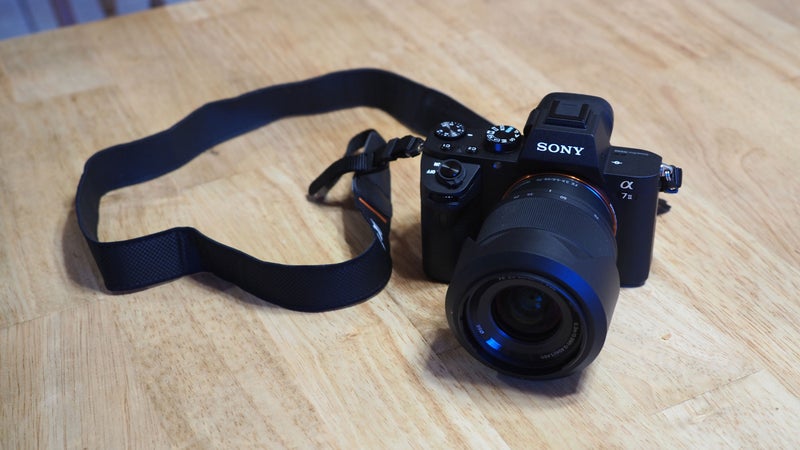
What They Are
Traditional digital single-lens reflex (DSLR) cameras apply internal mirrors to reflect light from the lens into the viewfinder. Mirrorless cameras skip the reflectors; light travels directly through the lens onto the sensor (and the rear LCD screen), and the viewfinder simply displays a digitized version of what's on the LCD screen.
Why the Selection Matters
Since DSLR applied science is older, these cameras are generally more affordable. They're besides much bigger and heavier. Mirrorless cameras tend to be pricier just also much smaller and lighter. (And the presence or absence of mirrors does not measurably change the quality of the image produced.)
Deciding Factors
The same corporeality of money will get you a nicer DSLR trunk than it will mirrorless, simply the added weight might mean y'all exit it out of your pack on long, hard days—the very outings that will probably yield the best photos. "What good is a camera if you're not going to desire to carry it around?" says Zansler. Remember to consider usability in addition to technical specifications.
Sensors
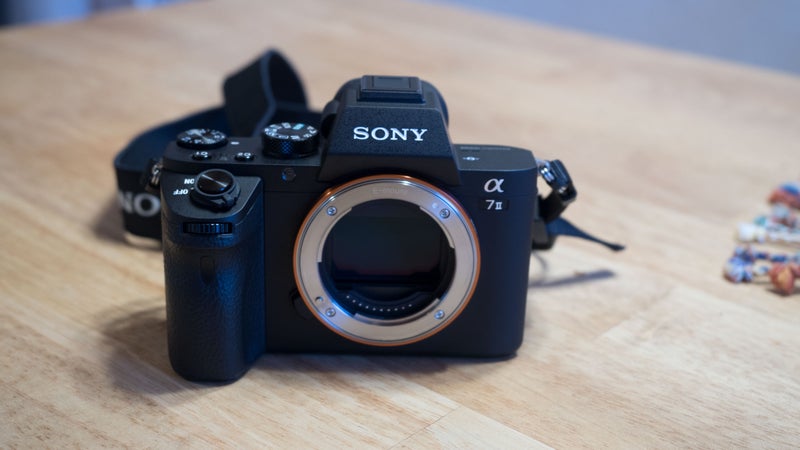
What They Are
Sensors are the digital equivalent of moving picture, collecting light from the lens and translating information technology into an paradigm. The bigger the sensor, the more light it will take in and, thus, the more detail the photographic camera will be able to capture. Well-nigh sensors are either APS-C size (23.5 by 15.6 millimeters) or full-frame (36 by 24 millimeters).
Why Size Matters
The main benefits of a larger sensor are increased level of detail and increased prototype size. "You can make much larger prints, and your images will have ameliorate depth," says Zansler. That's non to say that cropped sensors produce poor-quality images. A camera with an APS-C sensor will likely still exist ameliorate than your iPhone. (This depends on the lens you use. More on that further downwardly.) More importantly, it's way easier on your wallet.
Deciding Factors
Cameras with total-frame sensors cost significantly more than than those with APS-C sensors. If you get serious nearly photography, you'll desire a full-frame sensor because of the superior images. Just Zansler says they're not necessary for most beginners. Still, since APS-C and full-frame bodies utilise different lenses, going with an APS-C camera ways you'll need to buy all-new lenses if yous make up one's mind to switch to a total-frame trunk a few years down the road.
ISO Range
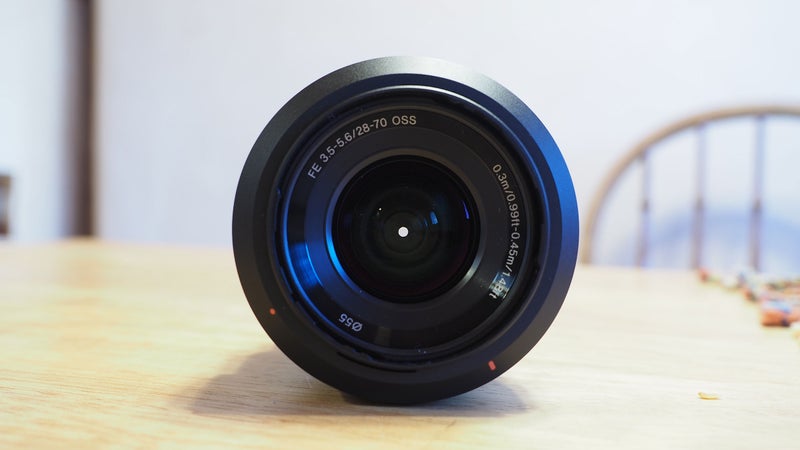
What It Is
ISO is a mensurate of how sensitive your sensor is to light. All cameras have a range of sensitivity levels, which you can adapt. At lower ISO levels, your sensor picks upwards less light. At higher ISO levels, your sensor picks upwardly more than light.
Why Information technology Matters
A high ISO is critical for shooting in dark, overcast, or otherwise low-low-cal conditions. High ISO levels are too helpful when shooting moving subjects that crave a fast shutter speed, considering fast-moving shutters permit in less light (i.due east., the photographic camera needs to procedure all the light it tin arrive that dissever 2nd).
Deciding Factors
Nicer sensors have higher ISO ranges, which means increased sensitivity in low light. They're as well more expensive. Well-nigh midlevel DSLR and mirrorless cameras accept ISOs up to 25,000, including the a7ii. Meanwhile, acme-stop bodies go over ISO l,000, similar the Sony a9, which costs $4,000. Nearly beginner photographers will be well served with an average ISO range unless they plan on shooting professional-quality action or night photography.
Stabilization
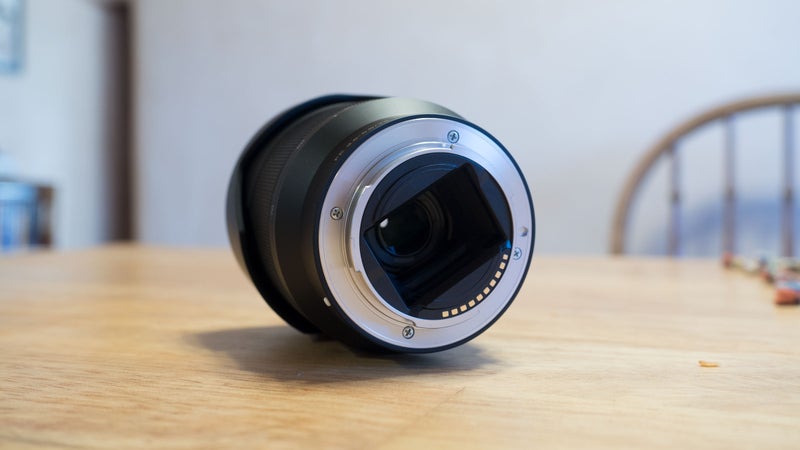
What It Is
Stabilization engineering science counteracts the blurring effects of camera shake.
Why Information technology Matters
If you twitch your hand while clicking the shutter push, stabilization ensures your epitome won't come out fuzzy. This can be particularly important in outdoor-adventure situations if yous're capturing moving people or shooting without a tripod.
Deciding Factors
Present, many mid- and loftier-end cameras have stabilization applied science built into the body. For cameras that don't, you tin can purchase lenses with it. Both come at a premiumof several hundred dollars (on the depression terminate) only tin can pay dividends if you plan to exist moving effectually a lot while you lot shoot.
Lenses
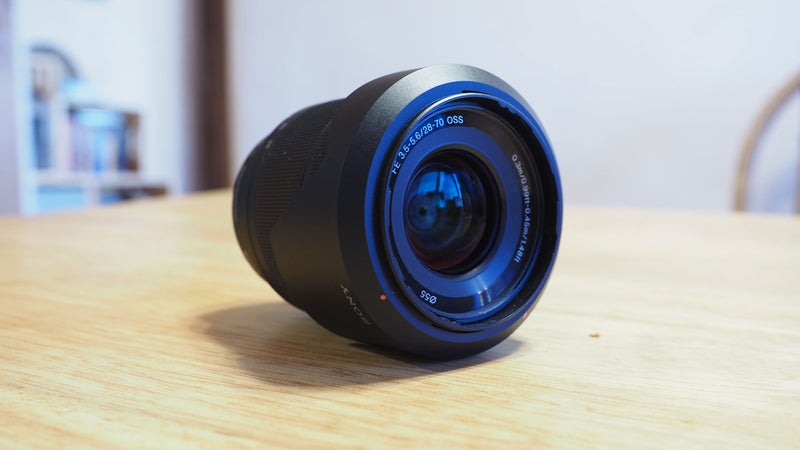
What They Are
A series of concave and convex drinking glass strips housed within a metal or plastic tube that collects lite and focuses it on your paradigm sensor.
Why They Affair
Lenses command everything nearly how your image turns out. The altitude betwixt your sensor and the point where light comes together inside the lens, called focal length, determines how wide or close up y'all can shoot. (Low focal lengths make wide shots, loftier focal lengths make close-upward shots. Zoom lenses have adaptable focal lengths within a range.) The amount of low-cal your lens allows in, called aperture (denoted with the term f-stop), determines exposure and the degree of background blur.
Deciding Factors
Nicer lenses accept better maximum apertures (confusingly, this corresponds to lower f-stop numbers) and top-quality glass for all-around sharper images. Generally, fixed-focal-length—or prime—lenses are cheaper than zoom lenses with equivalent specs.
Later paying up of $1,000 for a camera, it'due south tempting to cheap out on the lenses. All the same, many photographers contend that squeamish lenses are the ane piece worth the extra money, even for beginners. "Yous tin can beat out out for a squeamish camera body, but if you lot put crappy glass on the end of it, [the quality of your body] is non gonna prove," says Zansler.
Source: https://www.outsideonline.com/outdoor-gear/tools/buying-your-first-camera/
Posted by: wilsonexte1947.blogspot.com

0 Response to "How To Afford A Real Camera"
Post a Comment